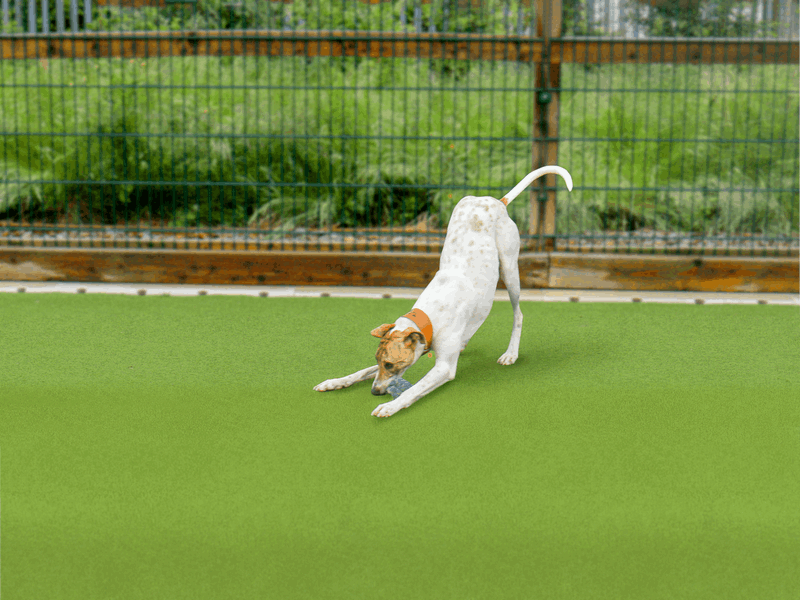Why is it important to understand my dog’s body language?
Responding appropriately to dog body language is important because dogs tend to repeat what works out well for them. So, if a dog learns that licking their lips with their ears slightly back communicates that they’re worried and want to be left alone, it’s likely they’ll repeat this.
By missing body language which may not obviously show they’re uncomfortable, they may turn to more obvious signs such as growling and barking – and if a dog learns that these behaviours are more successful in communicating that they need space, they’re likely to do it again.
Remember that each dog is different and when observing body language, it’s important to consider the individual dog, the whole body, and the context or situation in which the behaviour is occurring.
If you are concerned about your dog’s body language and are worried that it’s a sign of a health condition, speak to your vet.
Do all dogs use the same body language?
With many different dog breeds, sizes and shapes, it’s likely that the way they communicate will be different.
Not all dog breeds are the same, and sometimes their unique characteristics can make it harder to detect their body language signals. Some examples could include dogs that are very fluffy or have dark coats, making small movements in their faces or body muscles harder to detect compared to dogs with short, pale fur. Other dogs have very wrinkled skin, so they might not be able to move their faces and bodies in the same way as others.
Getting to know your individual dog and how they specifically communicate will help you to understand how they are feeling and respond appropriately. You’ll also be able to communicate this to others who don’t know them as well.
Although dogs can move many parts of their body in different ways, it’s important to look at the whole body to learn as much information as we can before trying to interpret how a dog might be feeling.
What does a wagging tail mean?
A wagging tail does not always mean a dog is happy and relaxed! Tail movements are an important part of doggy communication - as well as showing how the dog is feeling about things, they can also be used to waft scent around. When trying to interpret what a dog is communicating with their tail, it’s important to carefully observe and assess the whole dog, as well as exactly what’s happening at that moment. For example:
- A tail loosely swishing from side to side may indicate a dog is relaxed, whereas an upright tail that's stiff and wagging quickly may indicate a dog is feeling threatened.
- A tucked tail might be a sign of anxiety but could also be a sign of concentration.
- A wagging tail held up and over the body may be a sign of increasing excitement but may also be relaxed for certain individuals.
What is my dog trying to tell me?
It’s always important to consider individual circumstances when observing body language to understand what they’re trying to tell us. Behaviours can have different meanings depending on the situation. For example, a dog might drool and lick their lips as their dinner is being prepared. This is a normal bodily response to expecting food. But if a dog shows that same response in a different context, such as when being lifted into the car, this could show that they are worried about the car journey.
Example of a dog licking lips showing signs that they are worried
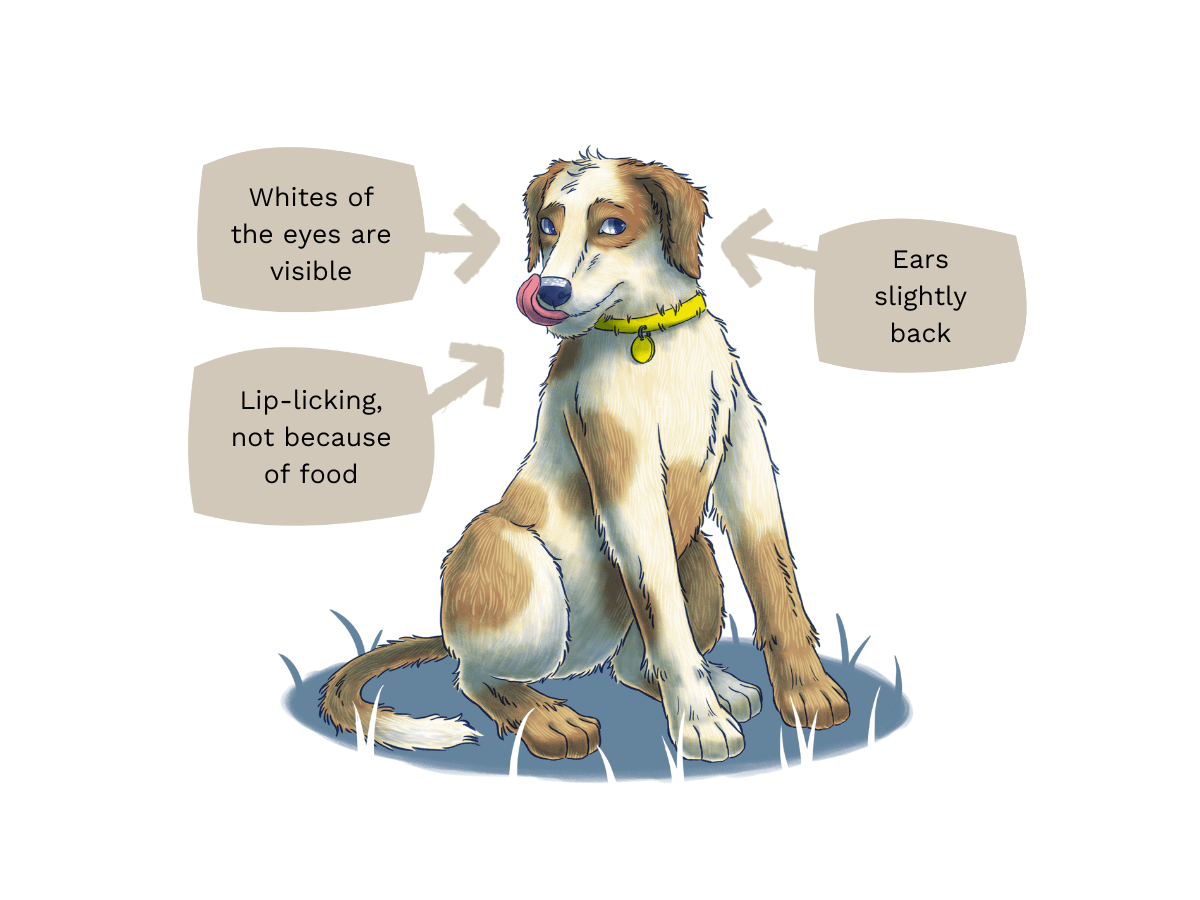
Signs your dog is relaxed
A relaxed, confident dog will have loose body language. You will notice that their body, including their facial muscles will be free from tension. Their ears and tail will be held in a neutral, comfortable position. Although each body part may be examined in isolation, it is important to observe the entire body, wherever possible, to interpret how the individual is feeling in that moment.
Examples of relaxed body language:
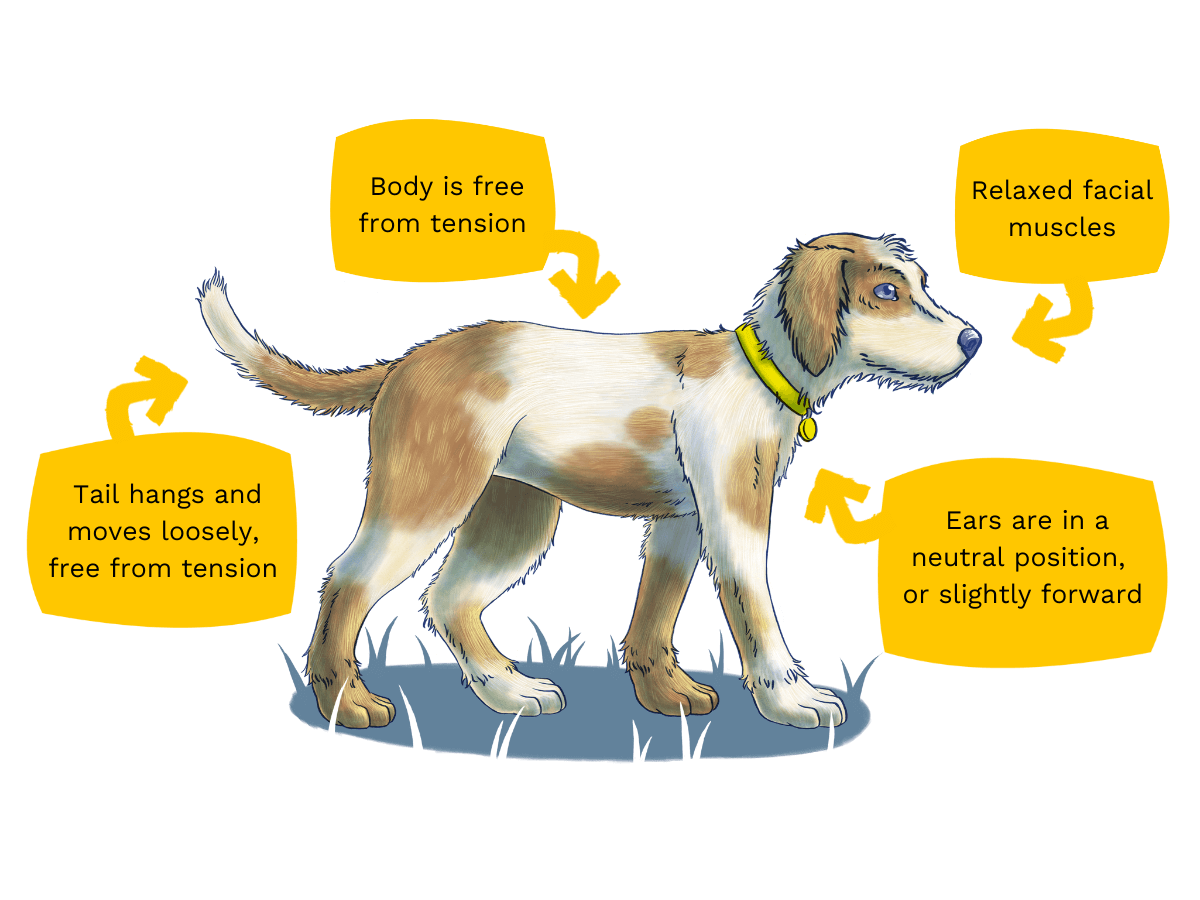
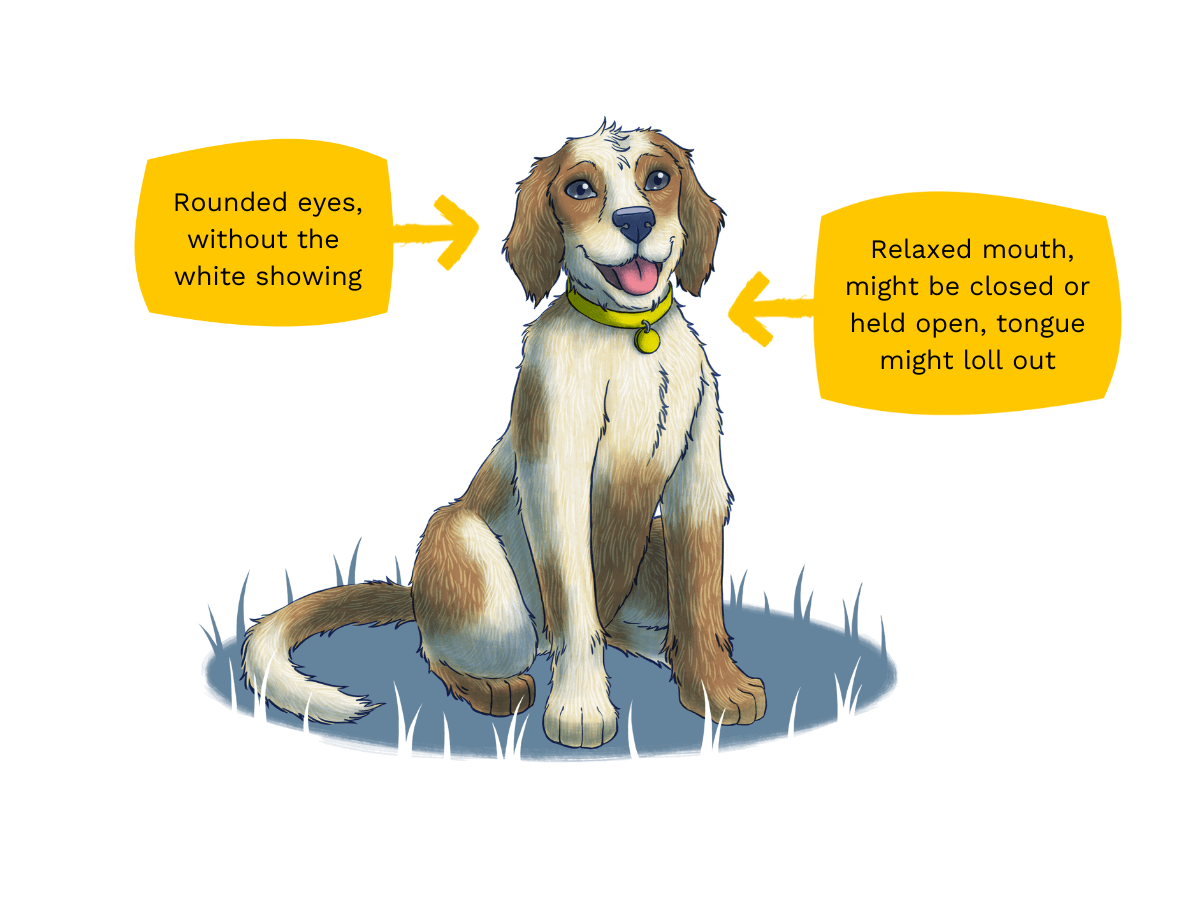
Signs your dog is anxious
If dogs are worried about something within their immediate surroundings, they may show behaviours to tell us, and other dogs, that they want to get away from the situation. Recognising these first signs of fear or anxiety will allow you to manage potential situations of conflict and help your dog avoid the things that worry them.
Examples of anxious body language:
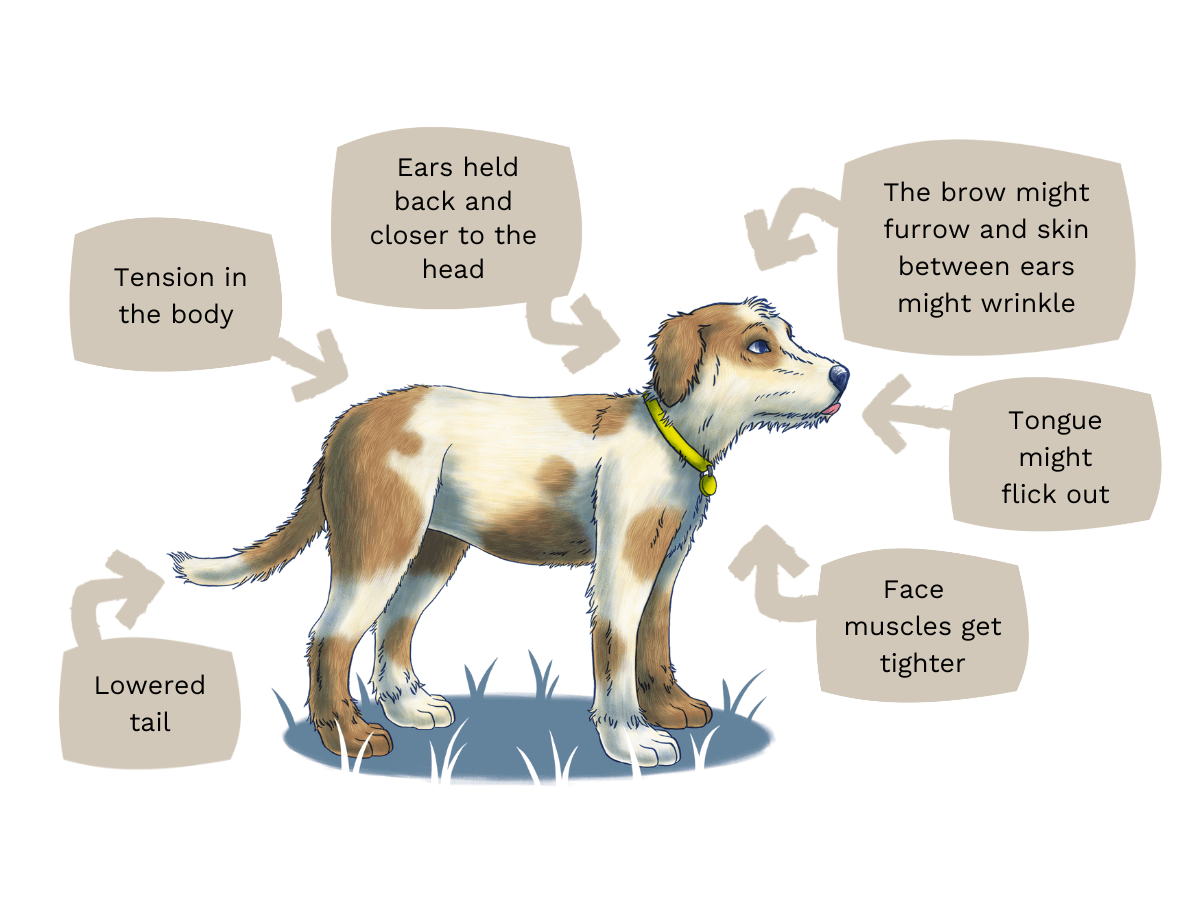
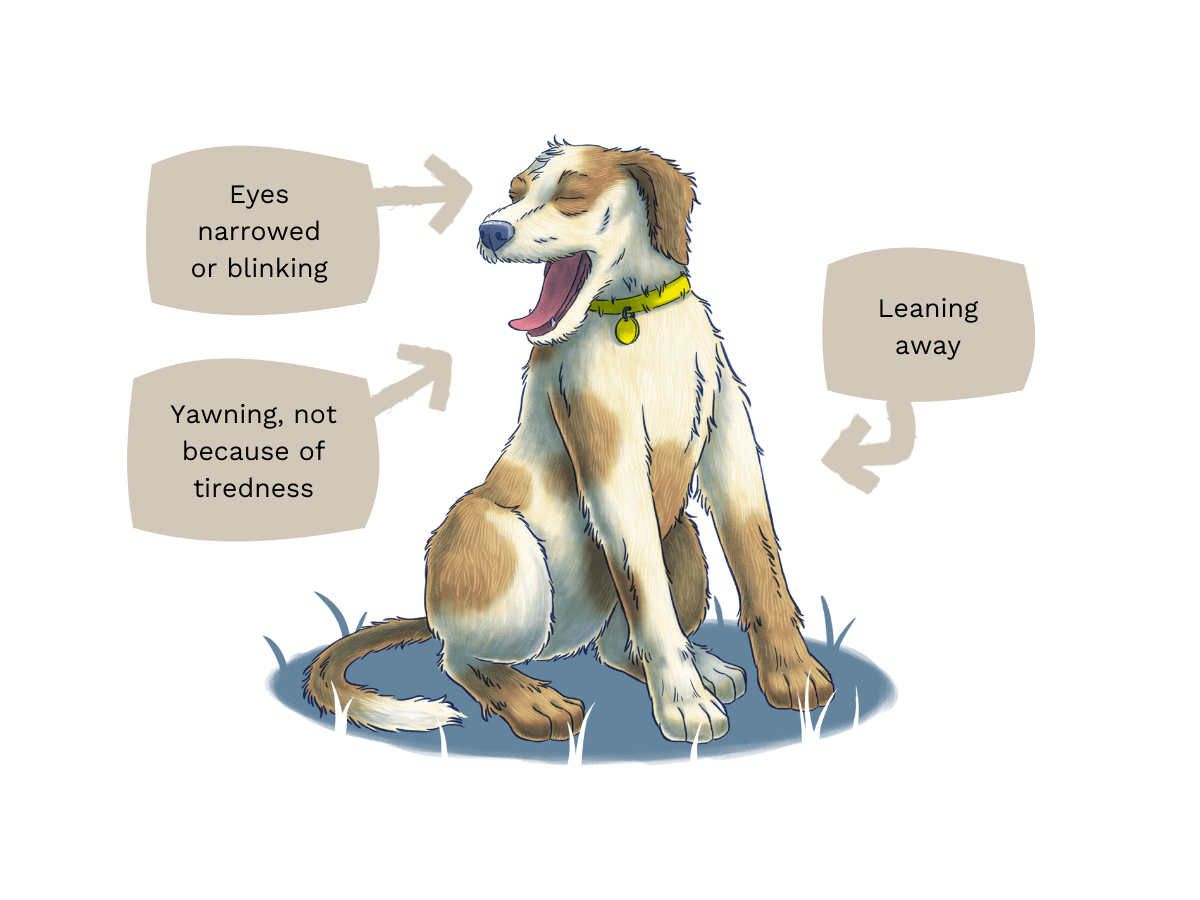
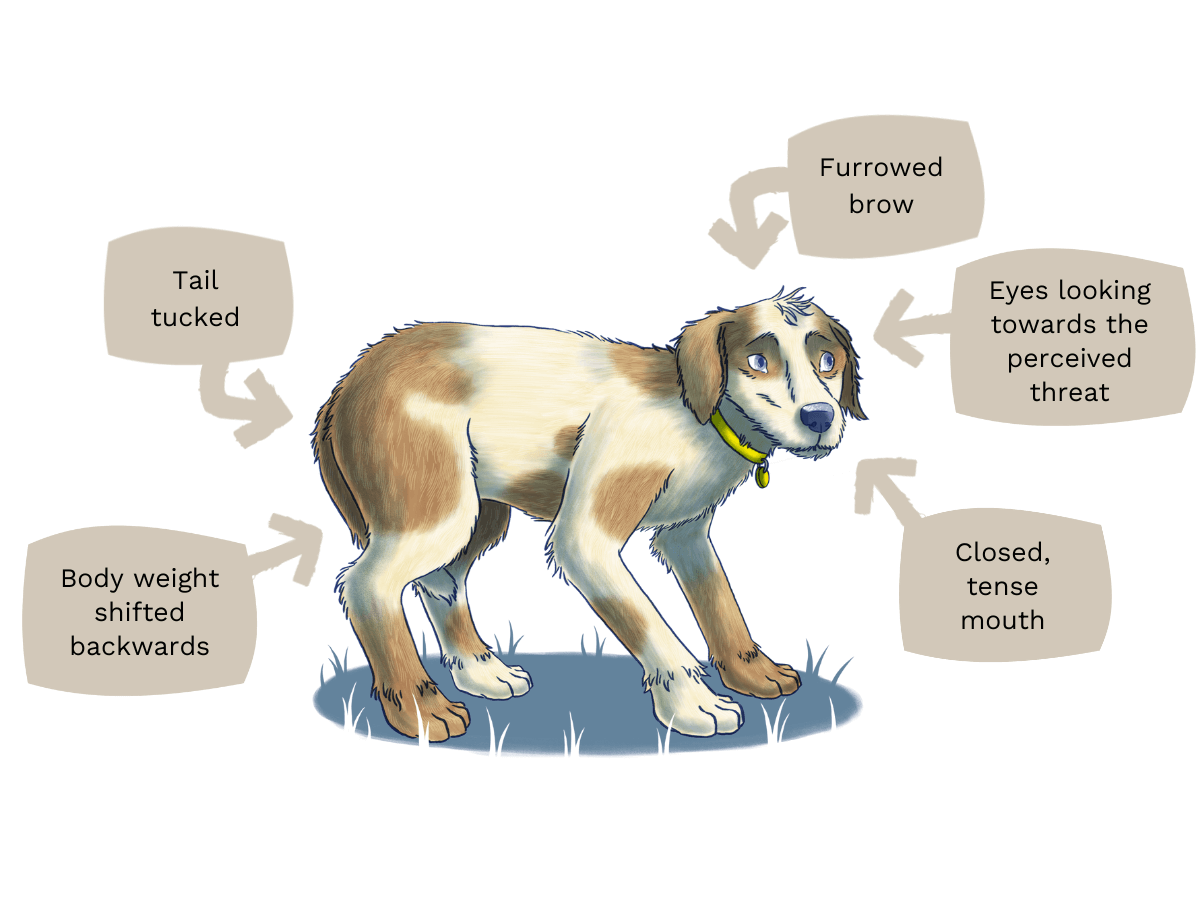
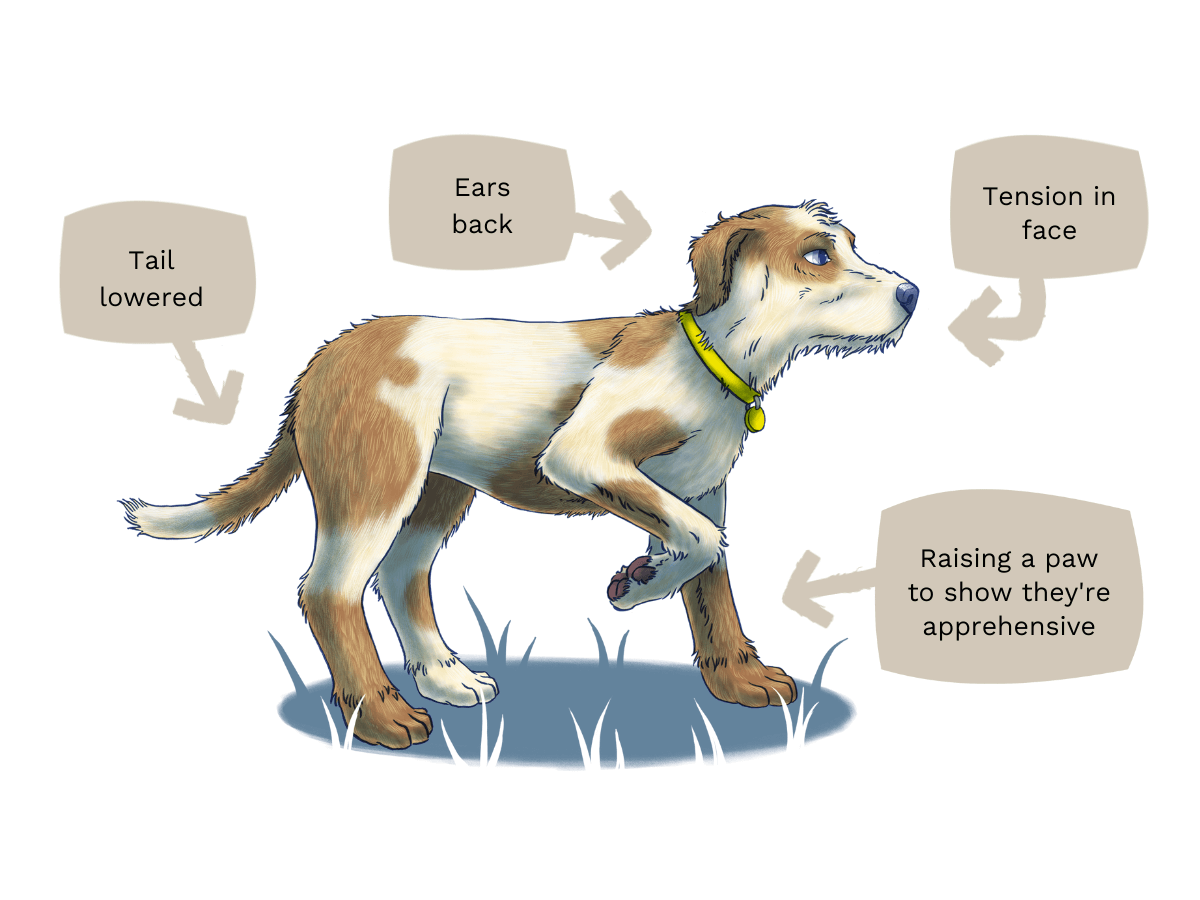
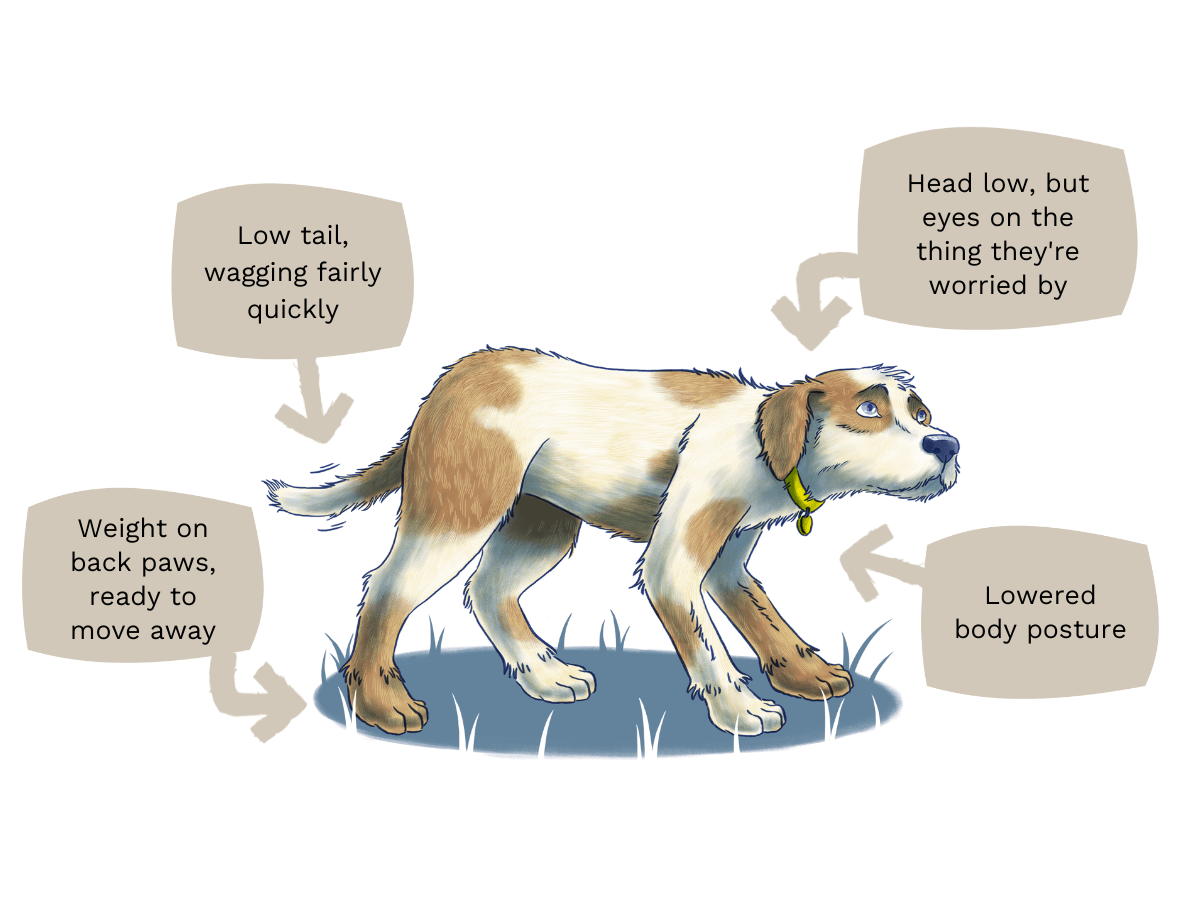
So, if you see any signs of fear or anxiety, you need to stop what you’re doing and think what might be causing your dog to behave in this way, and how you can help your dog feel more relaxed and confident. This might mean calmly moving or turning your dog away from someone approaching or something worrying in the distance, ending your interaction with them, or leaving your dog alone.
Many of these body language signals may seem subtle and often happen quickly, so we can easily miss them!
Can dogs smile?
Some body language signals can be misinterpreted. For example, a dog might show an ‘appeasement grin’, also referred to as a ‘submissive grin’ or often described as a ‘smile’. This is different to an aggressive display of teeth, as dogs may initially show this behaviour when they are trying to diffuse social conflict. Similarly, a dog might show an ‘appeasement roll’. The dog rolls onto their side or back to show that they pose no threat. This is very different to a relaxed dog rolling over to have their tummy tickled. The dog could escalate to showing more defensive behaviours (like growling or snapping) if the person or animal continues to approach or interact with them in this context. So, if you see this behaviour, it’s important to stop what you’re doing and give the dog space.
Example of an ‘appeasement grin’ and ‘appeasement roll’:
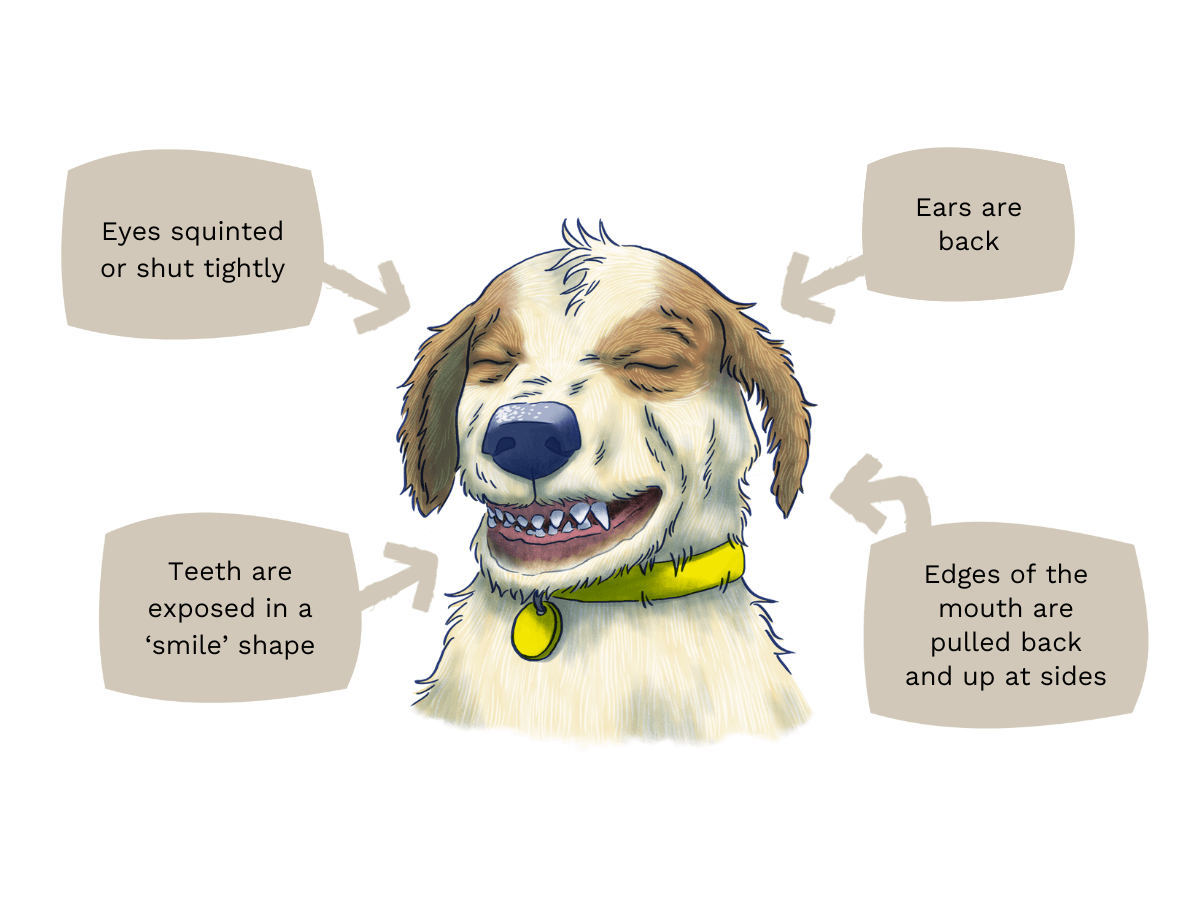
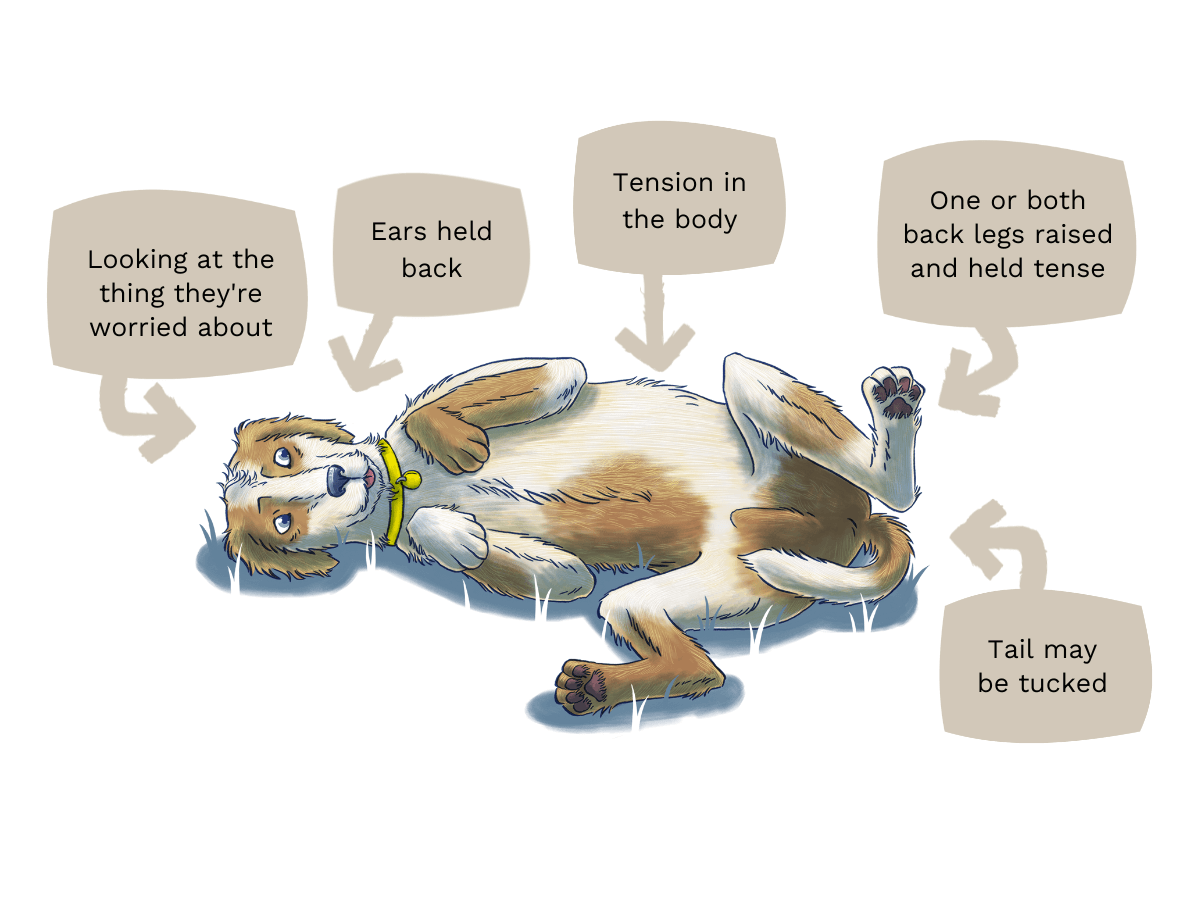
The more practice we can put into recognising the initial signs that a dog is feeling anxious or afraid, the sooner we can respond appropriately and avoid the situations or interactions that are worrying them. This will help them to feel safer and will reduce the likelihood of them needing to communicate in such risky ways as lunging, baring teeth, snarling, growling, snapping, or biting.
Remember, we must neither discourage nor ignore any signs that a dog is becoming more worried in any situation. This might teach a dog that there is no point in them growling or showing their teeth, for example, because it doesn’t work! So next time they might feel they have no other option than to bite straight away. If your dog shows any signs of aggressive behaviour, it’s important to identify, and avoid, as much as possible, any triggers for the behaviour in the short term. This might mean keeping your dog completely away from whatever appears to be making them feel worried and seeking help as soon as possible.
